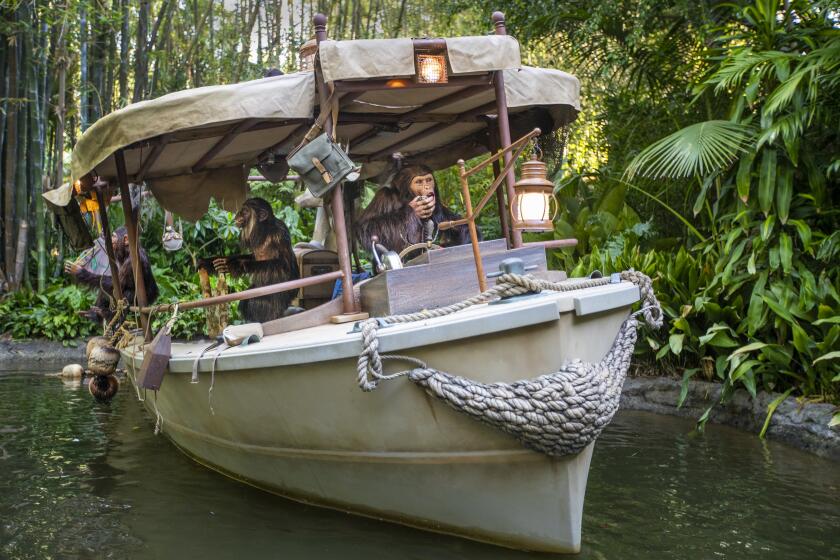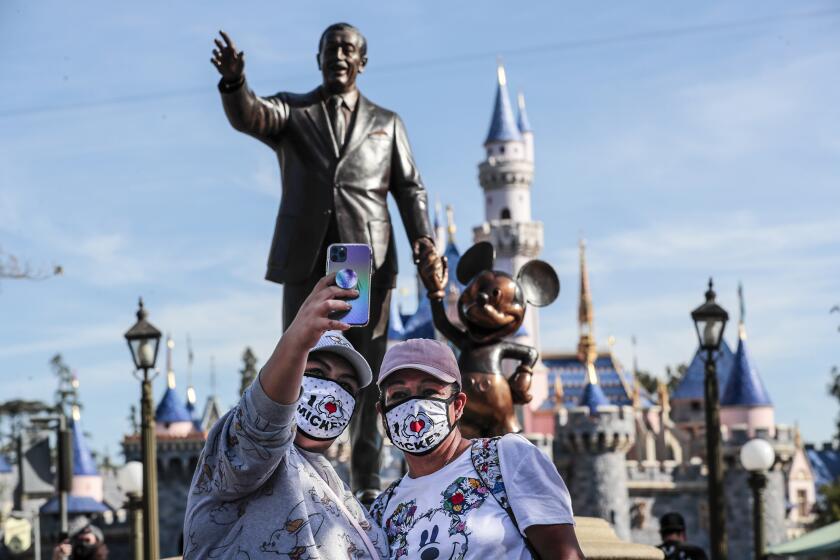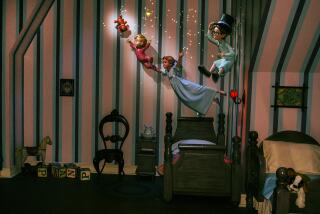Commentary: Disneyland’s Electrical Parade is ditching its patriotic float. Why that’s a good thing
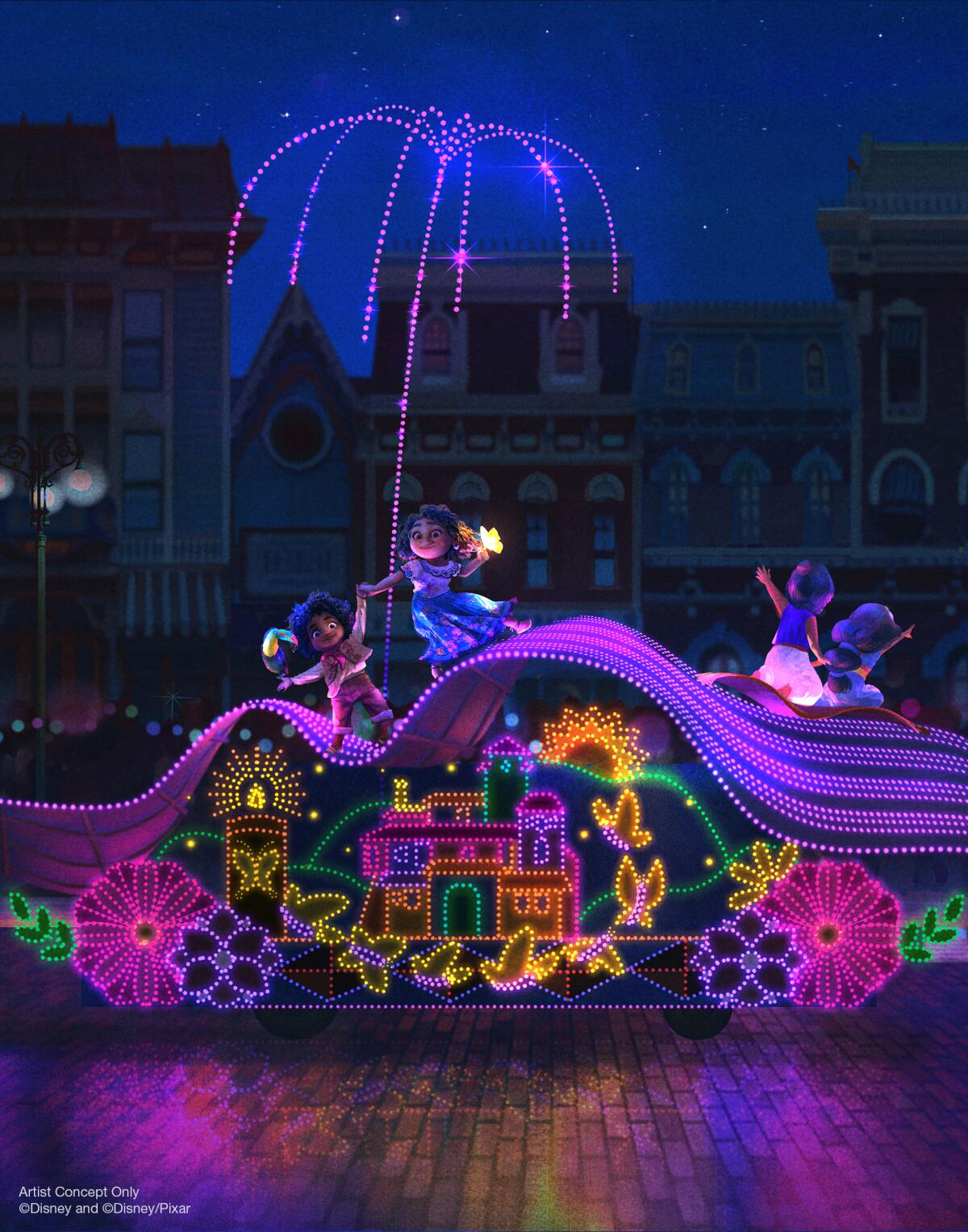
Retirement hasn’t fazed the Main Street Electrical Parade, which has now been resurrected multiple times since it “glowed” away, supposedly forever, in 1996. But when the electronic-music-infused stalwart returns once again to Disneyland on April 22, this nostalgia celebration will have a new look.
Consider it a makeover that will be decidedly less patriotic.
Characters and scenes from Disney films such as the recently released “Encanto” and “Raya and the Last Dragon” will join modern and classic Disney franchises to anchor a closing float designed to honor the 50th anniversary of the parade. Overall, the Main Street Electrical Parade will represent more than a dozen animated Disney and Pixar stories.
Concept art released by Disney showed “Encanto” characters Mirabel and Antonio atop a float flowing with purple lights and a kaleidoscope-inspired take on the magical home at the heart of the film. Other properties represented in the parade include “The Jungle Book,” “Coco,” “Mulan,” “Brave,” “Aladdin” and “The Princess and the Frog.” While Disney didn’t reveal how each film would appear, the floats will be dual-sided with different images and characters on each side. Closing the cavalcade will be a newly designed interpretation of Sleeping Beauty Castle.

More nighttime shows, including World of Color in Disney California Adventure and the fireworks staple Disneyland Forever in the original park, also will begin April 22. The nighttime entertainment returns nearly a year after Disneyland reopened after an extended pandemic closure. Fan favorite Disneyland show “Fantasmic!” currently is pegged to reopen May 28.
But the most notable change appears to be happening with the Main Street Electrical Parade, which is doing away with an America-first finale that had survived a number of decades and featured a closing stars-and-stripes float of the United States flag, followed by a larger-than-life eagle.
The new float will give the Main Street Electrical Parade an infusion of fresh film- and park-inspired intellectual property and strike Disneyland of one of its last remaining symbols of arguably stale patriotism. Also returning atop the closing processional is “Pinocchio’s” Blue Fairy, a character that in the parade’s early days had led it, as well as characters from “Frozen,” “Hercules” and “Pocahontas.”
Hardcore Disney fans will be thrilled to learn that the newly designed Electrical Parade float is inspired by the artwork of Mary Blair, whose career in animation contributed to the looks of “Peter Pan,” “Alice in Wonderland” and the Donald Duck-starring “Saludos Amigos.” But she’s best known as the artist who was the driving force behind Disneyland staple It’s a Small World, still today a gleeful diorama dedicated to childlike whimsies from across the globe. Some of the characters on the float are said to be in a Small World-influenced Blair style.
For the Electrical Parade, this is a move that is long overdue.
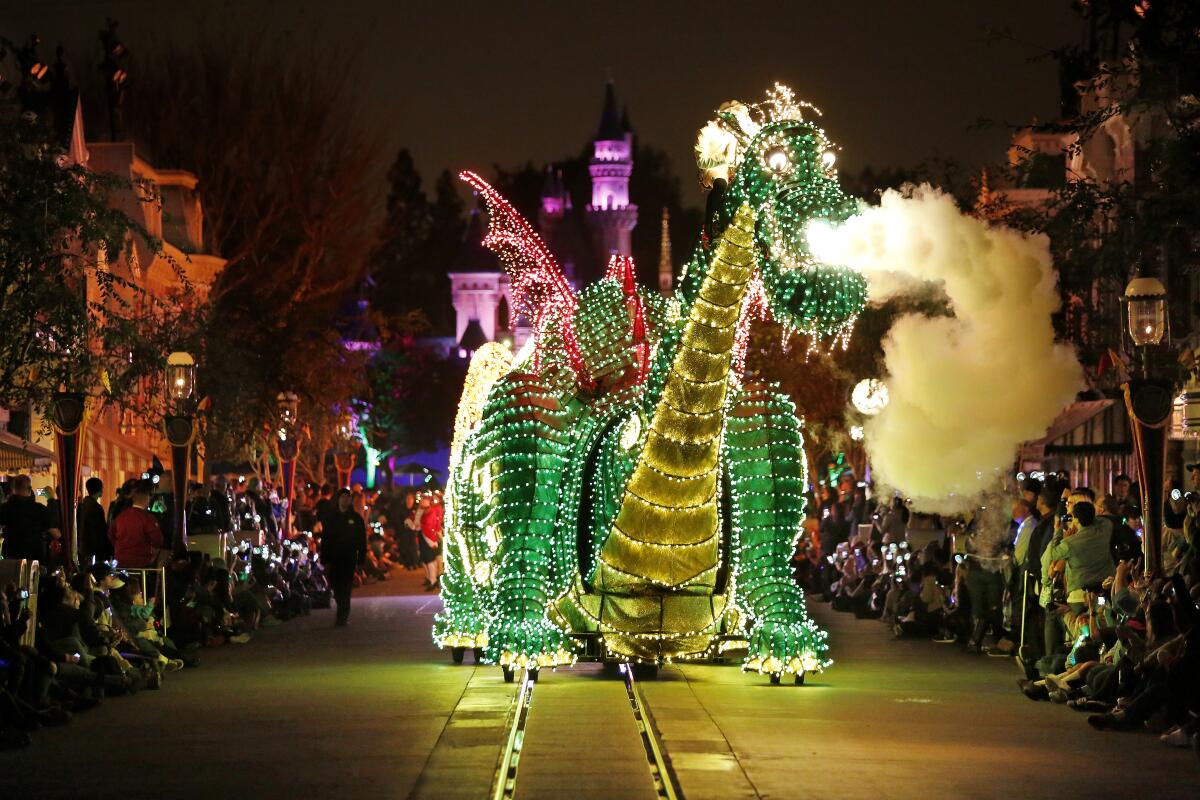
America is a collection of stories and myths from multiple cultures. The previous “To Honor America” parade float increasingly felt out of place at one of our country’s most fabled and recognizable institutions. With dancers clad in colonial garb, it felt like a relic of a time when America longed for “the good ol’ days” rather than forward momentum. Indeed, the stars-and-stripes finale came along in 1979, shortly after America’s 1976 bicentennial celebration (a Disneyland representative noted the parade was on hiatus in 1975 and 1976).
Admittedly, when it comes to outdated American exceptionalism, the park has sometimes been a tad slow (see the Jungle Cruise). Yet since Day One Disney has been a reflection of American culture more than it has been a love letter to American nationalism, a holdover from the park’s Walt Disney-era beginnings. Modern Disney, with a global fan base, is less interested in attempting to view the world through an American lens. And though it may be a cynical choice to pump more of its own tales into the parks, it’s one sector where corporate and public interests align for better, more timeless attractions.
Today, American culture the Disney way is “Coco,” “Encanto,” “Moana,” “The Princess and the Frog,” “Black Panther,” “Frozen,” “Raya and the Last Dragon” and others. Each of these tales, taken together, though not above criticism, is more reflective of the diverse communities that comprise theme park constituents than something that looks better left to the Fourth of July.
The new Jungle Cruise shows Disney wants to be in the cultural conversation rather than an artifact or, worse, a representation of the ‘good ole days.’
Disneyland, of course, is a place of tradition, and even today the park houses a robotic Abe Lincoln, stages flag retreats and tells the story of the first Christmas each December. But part of the park’s heritage is change. The Electrical Parade has been a source of relative constant upheaval. Originally, the parade ended with a series of small floats, intermingling Disney characters and musical instruments. In 2009, Disney added Tinker Bell to the start of the parade and placed the Blue Fairy on a long hiatus.
Now anchoring the parade as the closing float will be a 19-foot-tall interpretation of Sleeping Beauty Castle — one that incorporates designs from the façade of It’s a Small World — instead of the giant American eagle that followed the flag float. Sleeping Beauty Castle, Disneyland’s centerpiece since its July 1955 opening, has been copied and reimagined at other Disney parks, but it remains the most eye-catching symbol of the Anaheim park.
It’s a SoCal tradition that stands as a lasting testament to the power of American culture and consumerism. In nonpandemic times, Disneyland was estimated to draw 19 million guests per year, and the castle is the sign to all that we are not just somewhere imagined but also otherworldly.
Sleeping Beauty Castle also is symbolic of a place where America’s most popular art form, cinema, can take physical shape and become a spot to reframe, recontextualize and reorient our relationship with our country’s myths and possibilities. And one of the most impactful ways to get to know one another is through the stories we have told over different eras — tales that can represent the full spectrum of the American population — rather than rose-tinted American flag-waving.
With COVID-19 abating in California, Disneyland reopened on April 30. After 13 months away, how did it feel?
More to Read
The biggest entertainment stories
Get our big stories about Hollywood, film, television, music, arts, culture and more right in your inbox as soon as they publish.
You may occasionally receive promotional content from the Los Angeles Times.
